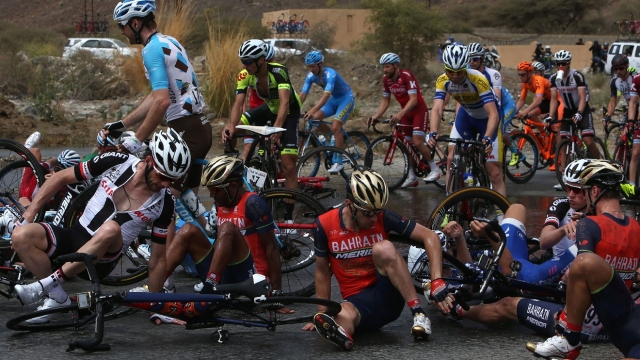
Howard Gold’s No-Nonsense Investing: Three reasons the next crash may be worse than 1987’s
http://ift.tt/2zwHWVk
Thirty years ago Thursday, the U.S. stock market had its worst day ever. On Oct. 19, 1987, the Dow Jones Industrial Average lost 508 points, 22.6% of its value.
It was early in my journalism career and I remember the fears that, like Oct. 29, 1929, it would lead to a second Great Depression.
That didn’t happen, of course — the next recession began nearly three years later, in July 1990 — and because of that, people dismiss the 1987 crash as just a one-day blip.
“We’ve moved so far from any realistic approach to market regulation, I don’t know where you would start.”
Diana B. Henriques
Nothing could be further from the truth, as an excellent new book on the subject shows. “A First-Class Catastrophe: The Road to Black Monday, the Worst Day in Wall Street History,” by Diana B. Henriques, makes a strong case that 1987 wasn’t just a temporary crash but a painful bear market that lasted three months and included a nearly 1,000-point, or 35% loss, in the Dow. It was also a near-systemic crisis that was a precursor for much that came later.
“Black Monday was the contagious crisis that the system nearly didn’t survive,” Henriques wrote. “All the key fault lines that trembled in 2008 … were first exposed as hazards in 1987.”
Read: Amazon, Apple, Google and Facebook will all go away within 50 years, says author
Henriques, a longtime writer for The New York Times who also wrote “The Wizard of Lies,” the bestseller about Bernie Madoff that was made into an HBO movie starring Robert De Niro, contends that the 1987 crash had several basic causes: “breakneck automation, poorly understood financial products fueled by vast amounts of borrowed money, fragmented regulation, [and] gigantic herdlike investors,” she wrote.
When the crash came, the new technology, program trading, acted not as a hedge but as an accelerant to the sell-off on stock and options exchanges. Regulators from the Securities and Exchange Commission (SEC) and the Commodity Futures Trading Commission (CFTC) were stuck in their silos during the general market contagion.
Several big firms — including Charles Schwab & Co.
which had just gone public — were on the verge of insolvency. The Hong Kong stock exchange closed for 10 days, plunging 30% on the day it reopened.
In an interview, Henriques (whom I’ve known and respected for years) told me not much has fundamentally changed since the 1987 crash, and some things have gotten worse. So here are three reasons I think the next crash, whenever it comes, could be worse than 1987’s.
1. The market is much more fragmented now. Back in 1987 the New York Stock Exchange and the Chicago options and futures exchanges were almost the only games in town. NYSE Chairman John Phelan and the Chicago Mercantile Exchange’s legendary Leo Melamed could, on a handshake, institute the first “circuit breakers” that gave traders timeouts in the midst of sell-offs.
Now, Henriques told me, “we’ve got 12 regulated stock exchanges, we’ve got 30 [alternative trading systems] where stocks can trade and [who knows] how many dark pools — members-only trading venues.” The NYSE, she said, handles barely 30% of trading volume now, vs. 90% in 1987, and firms trade tiny blocks of shares. Coordinating everybody now would be like herding cats, while organizing the big trades that got the market off its back in 1987 seems inconceivable.
2. Regulators are still living in their own worlds. Henriques is most passionate on this point — that even the near-catastrophe of 2008 caused few changes in the perennial regulatory turf war. The SEC and CFTC are like tugboats passing in the fog, even as financial innovation continues apace. Efforts to rationalize the structure after the financial crisis were killed by Congress’ competing fiefdoms, and the Dodd-Frank Act instituted rigid rules where, in Henriques’ view, flexibility was needed. “We’ve moved so far from any realistic approach to market regulation, I don’t know where you would start,” she told me.
3. Computerized trading is more pervasive than ever. Program trading became the scapegoat for the 1987 crash, especially portfolio insurance (synthetic put options applied to whole stock portfolios) and index arbitrage (buying S&P 500 futures while simultaneously selling all the individual stocks). But when panic set in, those strategies collapsed as buyers vanished, pushing exchanges and clearing houses to the brink.
Now, J.P. Morgan
estimates, passive and quantitative investing accounts for 60% of stock trading, double its share a decade ago. “You have trading strategies that are algorithm-driven by giant investors using not billions but trillions of dollars,” Henriques said. “Vanguard and BlackRock
together have assets under management of $10 trillion, “and much of that is passive, in which software programs direct stock purchases.”
The 2010 “flash crash” showed the perils of computer-driven markets going haywire. To this date, no one knows why it happened.
Henriques speculates that this time around, the 24/7 news cycle and social media could spread panic further and faster than in 1987. “I think we’re on a knife’s edge,” she told me.
In 1987, she wrote, “catastrophe had been averted, not through careful political oversight and astute regulatory foresight, but through sheer luck …”
We’ll sure need a lot of that the next time around.
Howard R. Gold is a MarketWatch columnist and founder and editor of GoldenEgg Investing, which offers exclusive market commentary and simple, low-cost, low-risk retirement investing plans. Follow him on Twitter @howardrgold.
business
via MarketWatch.com – Top Stories http://ift.tt/dPxWU8
